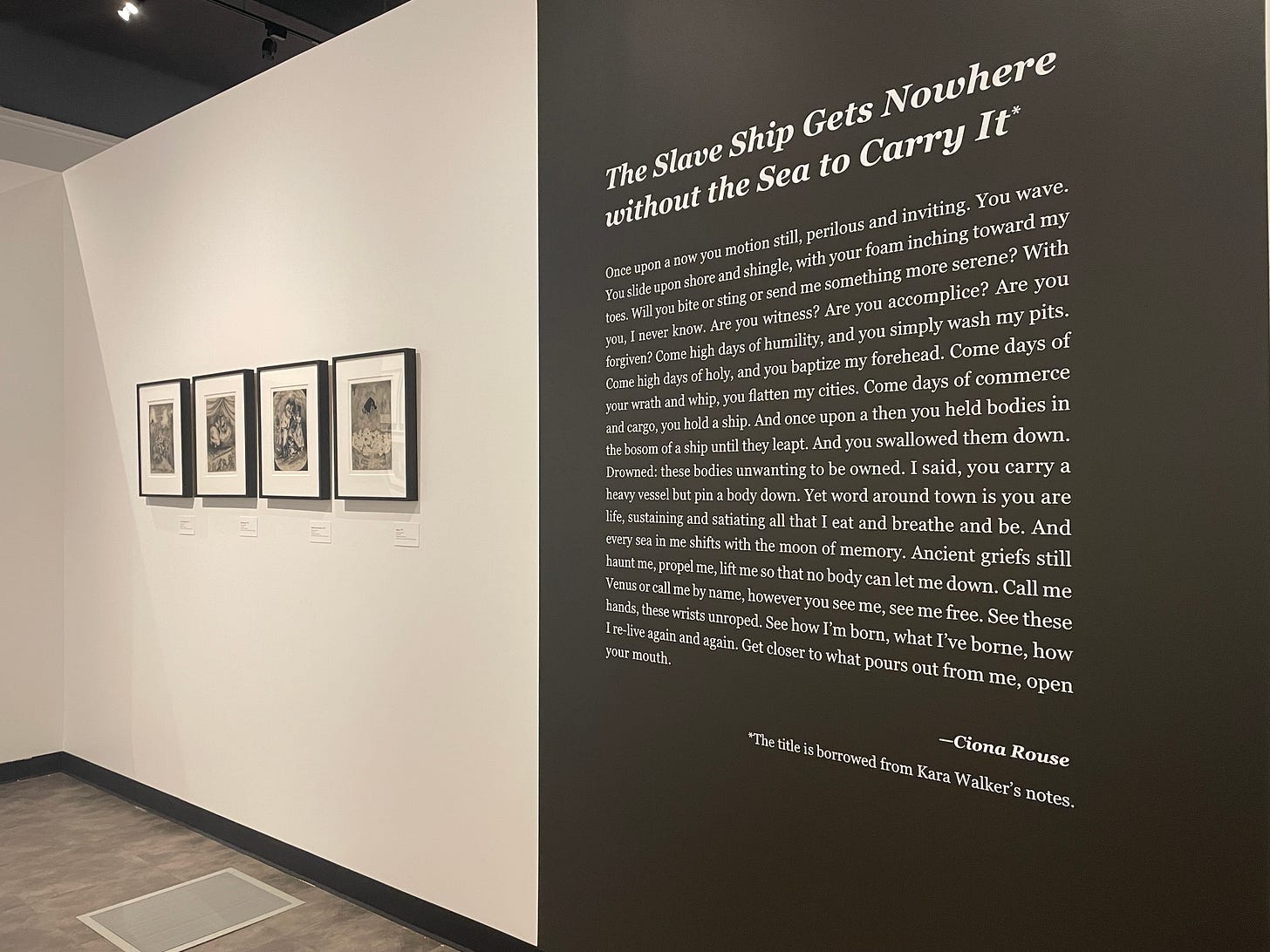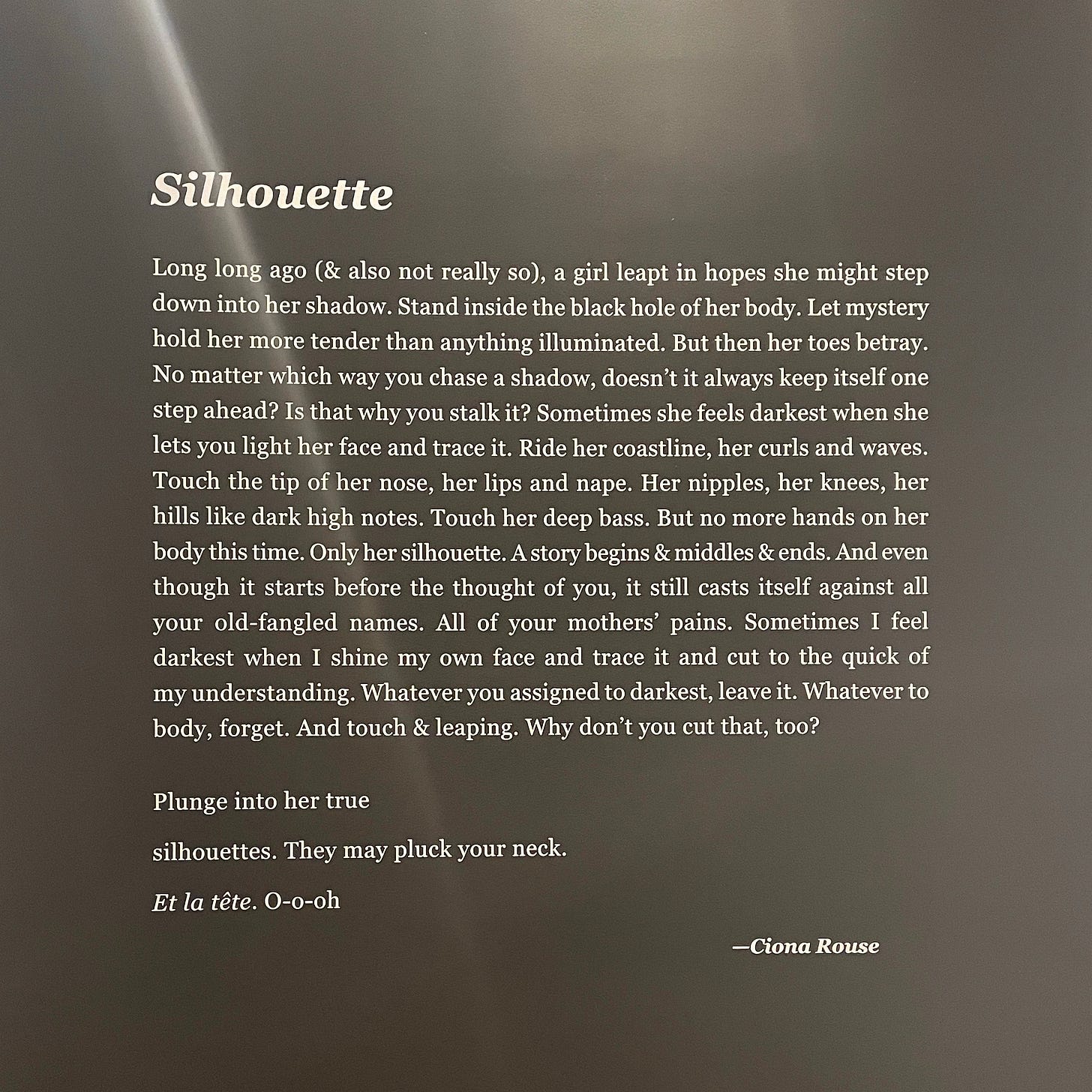Be advised: Themes of human trafficking, racial terror, and sexual violence.
About a year ago, the USC Fisher Museum of Art hosted a solo exhibition called Kara Walker: Cut to the Quick, containing some of her pieces within the Schnitzer Family Foundation collection. Walker has been a renowned artist for most of my life, and she was one of the youngest people ever to receive the prestigious Macarthur Foundation Fellowship, a.k.a the Genius Grant. She has consistently used her art to contend with power, slavery, and sexual violence, and what is more apt for closing out spooky season than discussing art about racialized terror?
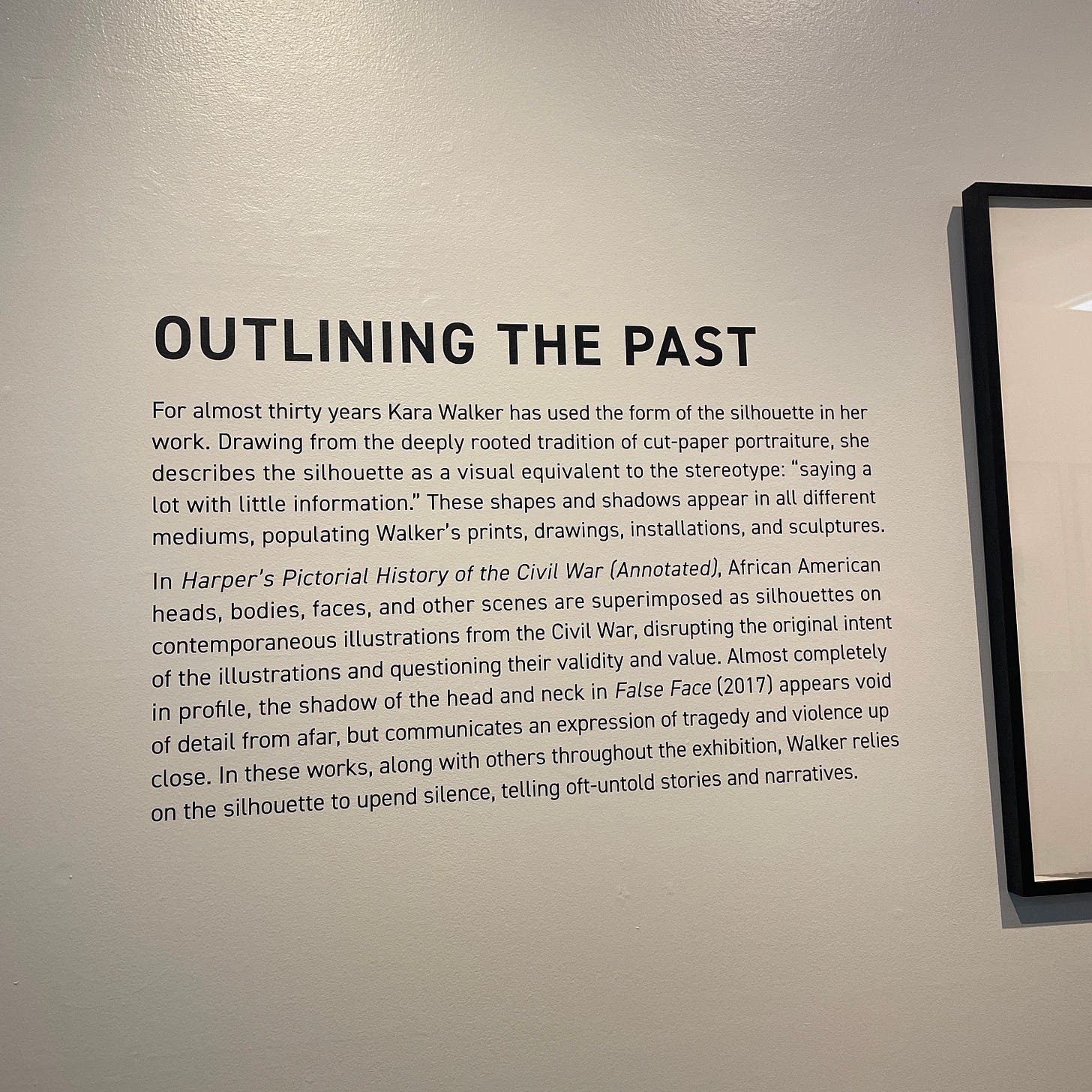
I didn’t take many pictures during my trip. It was game day (USC-UCLA rivalry to be exact) so I was a little flustered when my spouse and I arrived to meet our friends. My museum/gallery hobby was budding at the time, so I was still learning how to interact with art exhibitions. Ultimately, I spent most of the time drinking in the imagery, just excited to see her work in person for the first time, but I managed to capture a few photos to share.

The curators included plenty of exposition about the themes in Walker’s work, and their motivations for choosing the pieces. Her work can be hard to stomach for many – as slavery should be – so the Fisher Museum offered multiple resources to support people who experienced strong emotional reactions to the artwork, including a space for contemplation and reflection near the end of the exhibition. I didn’t take pictures of that part to respect others’ privacy, but I remember being floored by Walker’s capacity to hold and shape so much horror and grief.
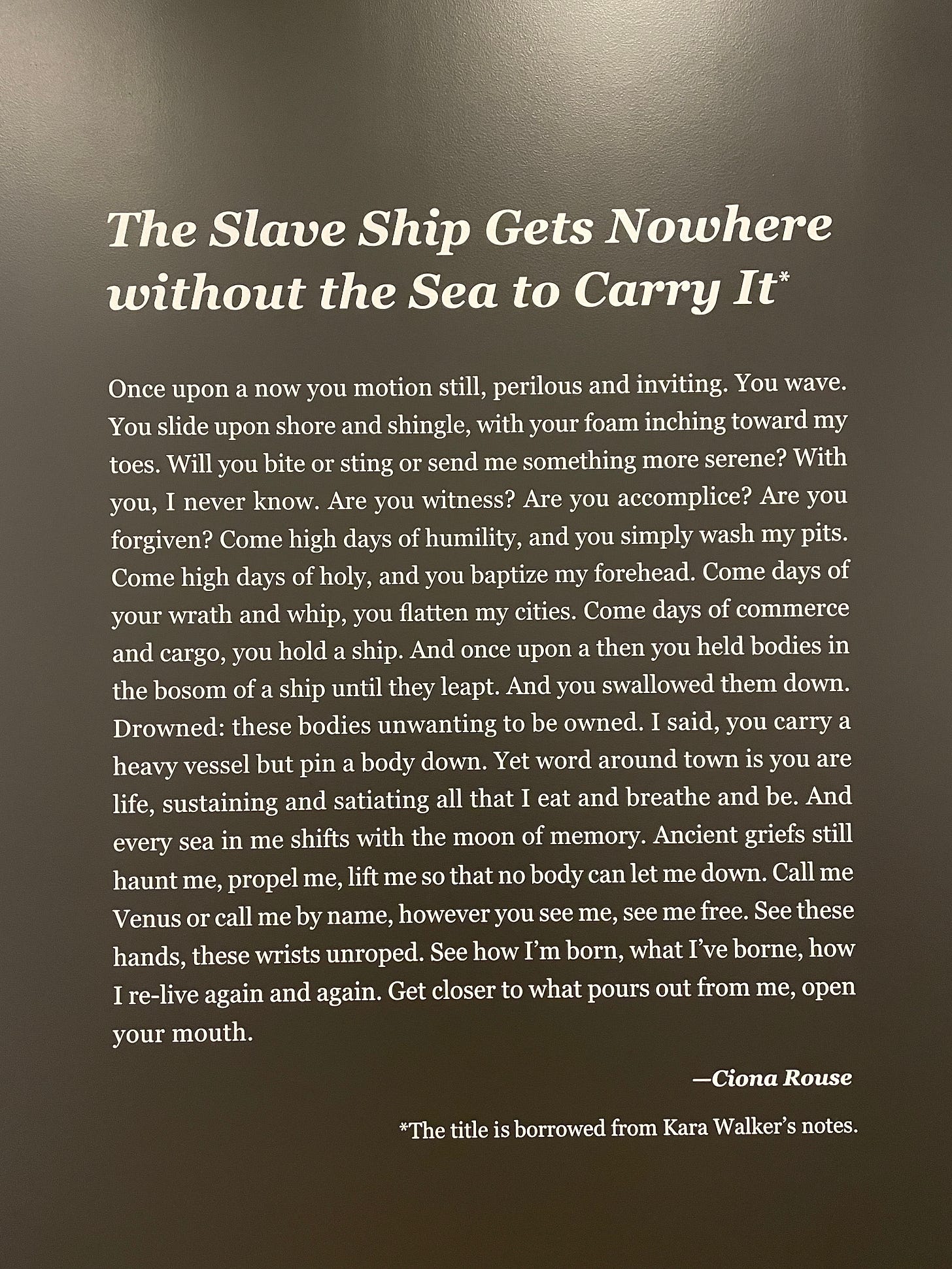
Walker doesn’t pull punches, and I appreciate that. Cut to the Quick was great for readers of Saidiya Hartman, Toni Morrison, Christina Sharpe, and Octavia Butler. So me… The exhibition was great for me. Part of the reason I go to museums is to help with my writing. As I approach dissertation, I’m beginning to think about what I want to spend the next 2-5 years of my life reading and writing (and crying) about. Part of me wants to write about myth and the slave trade in some sense. I rarely get exhausted by or turn away from learning about slavery. In fact, it fuels me, stoking the embers of rage I’ve been nursing for years.1 So my main hesitation with writing about slavery for my dissertation is that the vestal altar of rage I tend in my psyche will turn into a conflagration. Fortunately I still have at least six months to think about it.
To use Hartman’s terminology, the next set of images are “scenes of subjection” that depict sexual violence, racial terror, and human trafficking. I’m putting a section break here in case you want a second to pause and take a breath.
This is part of an ongoing a series about my interest in Black art. If you like it, check out Vol. 1 and the prequel for more.
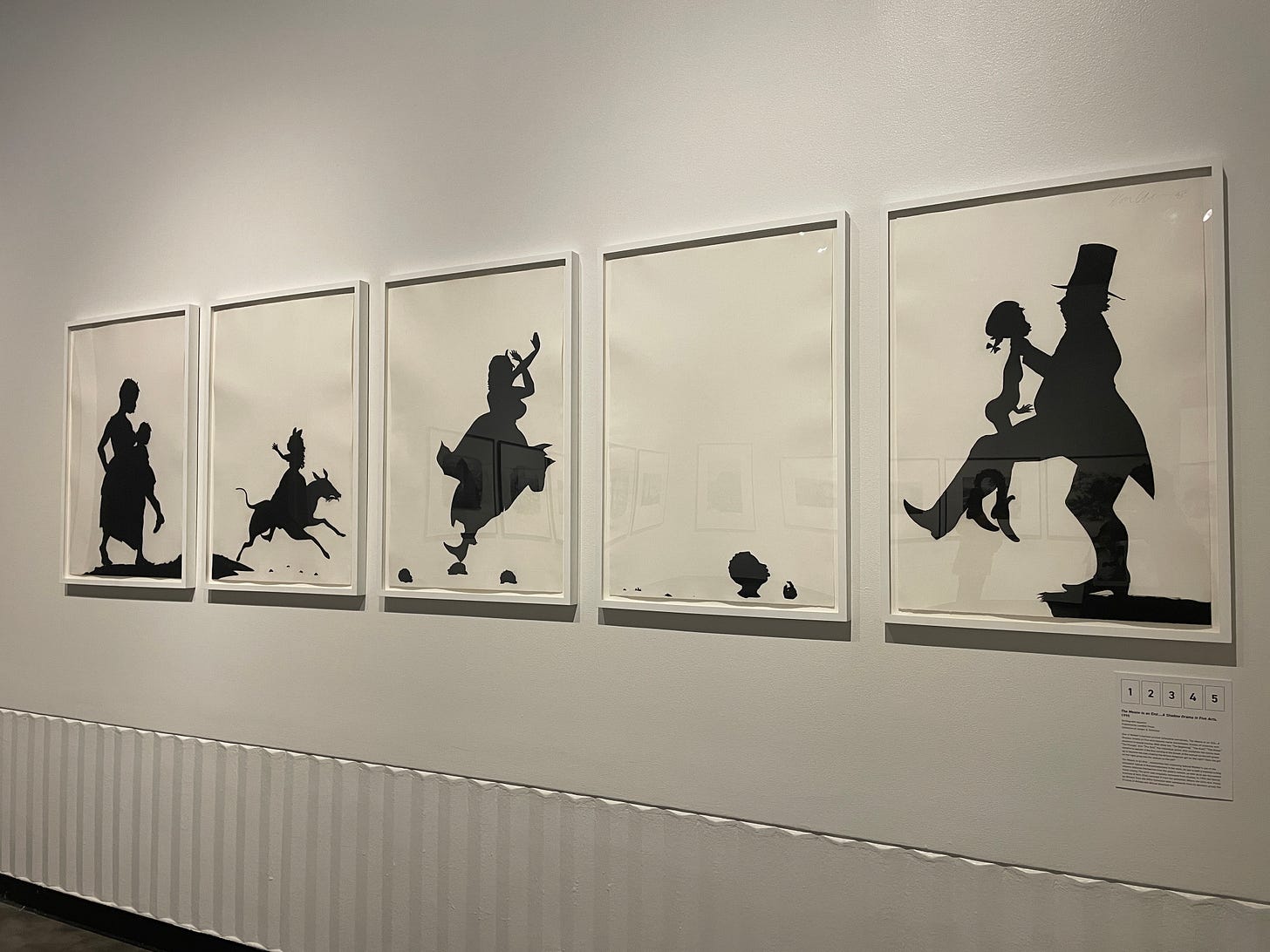
“The Means to an End” recalls for me a prominent motif in neo-slave literature where a wet nurse raises a child who then matures into the master of the estate where she is held captive. Less directly, it makes me think of Octavia Butler’s Kindred in which the protagonist has to repeatedly travel through time to save the life of her distant ancestors on a plantation in Eastern Maryland.2
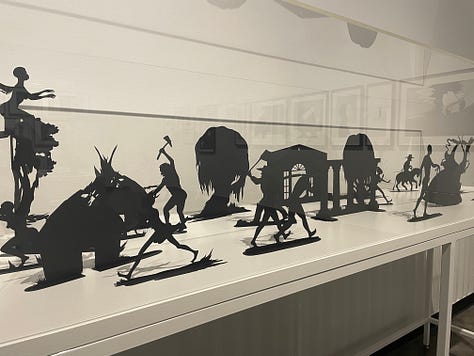
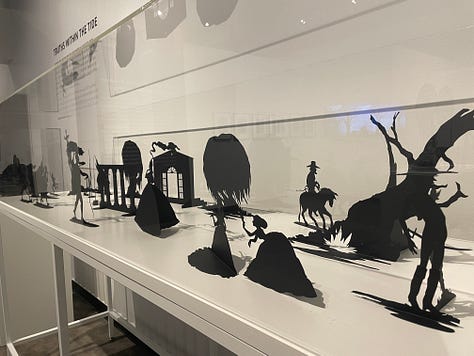
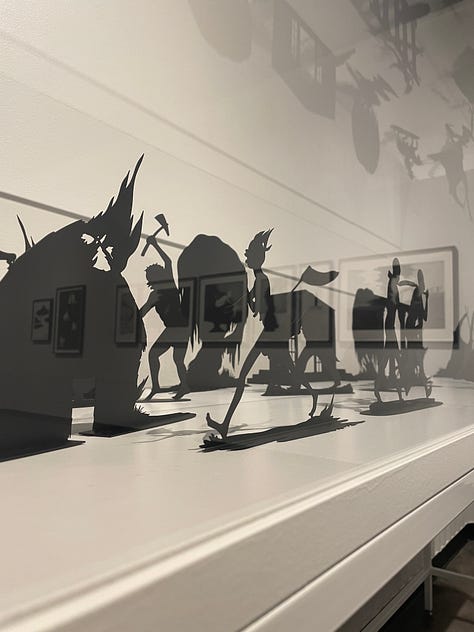
I respect the simplicity of the media Walker uses, and the way she deploys color (or lack thereof), irony, and subversion in her work. The stark black and white make me think of the Death card3 in tarot imagery, and the paper takes the idea of a paper doll and morphs it into something horrifying. The best example of this is her “play set” that takes an otherwise refined children’s toy and draws viewers into the horrors of the slave trade from its beginnings in African villages to revolts in the New World. The play set amplifies popular media like the scenes of Topsy and Bopsy from Lovecraft Country, which externalizes the racial terror children like Emmett Till and unnamed “pickaninnines” endured during slavery and Jim Crow as demons.
Learn more about Kara Walker on her website and from an interview she did for the WNYC Studios Helga podcast in January 2024.
Note: This post contains affiliate links. If you choose to purchase books using my Bookshop affiliate links, I will receive a small commission on your purchase.
See “The Wisdom of Wounds” for more on rage and despair.
Drinking game idea: take a shot every time I sneak a Butler reference into a Substack post.
Jessi Ujazi created my absolute favorite image of the Death card. I get chills every time I see it: https://jessiujazi.com/major-arcana





